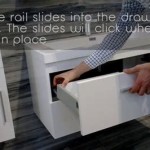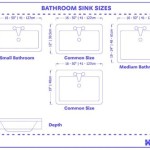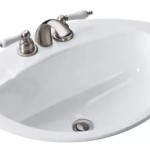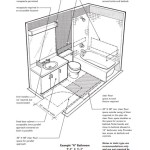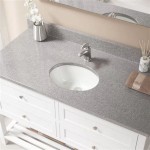Bathroom Sink Is Clogged With Hair: A Comprehensive Guide to Unclogging and Prevention
A clogged bathroom sink is a common household problem, and in many instances, the primary culprit behind the obstruction is hair. Hair, due to its structure and tendency to bind together, readily accumulates within the drainpipe, trapping other debris and gradually restricting water flow. This article provides a detailed exploration of the methods for unclogging a bathroom sink blocked with hair, along with preventive strategies to minimize the likelihood of future clogs.
Identifying the Problem: Recognizing the Signs of a Hair Clog
The initial indication of a hair clog is often a slow-draining sink. Water may take significantly longer to empty than usual, or it might pool in the basin. In more advanced stages, the sink may become completely blocked, with the water level rising and failing to drain at all. Another potential sign is a gurgling sound emanating from the drainpipe, which suggests that air is being forced through a partial blockage. A foul odor might also be present, resulting from decaying hair and trapped organic matter within the drain.
It's important to distinguish between a simple clog and a more complex plumbing issue. If multiple drains in the bathroom or even throughout the house are experiencing slow drainage, the problem may lie deeper within the main drainage line, requiring professional intervention. However, if the issue is isolated to a single bathroom sink, it is highly probable that the clog is located within the sink's drainpipe, and thus, amenable to DIY solutions.
Unclogging Techniques: Step-by-Step Methods for Removing Hair
Several methods can be employed to dislodge and remove hair clogs from a bathroom sink drain. The choice of method may depend on the severity of the clog and the tools available. Starting with the least invasive options and progressing to more aggressive techniques is generally recommended.
1. Manual Removal: This is the simplest and often the first line of defense. This involves manually removing visible hair and debris from the drain opening and the immediate vicinity. A flashlight can be helpful for illuminating the drain and identifying obstructions further down. Tweezers, needle-nose pliers, or a bent wire hanger can be used to grab and extract the hair. Be cautious to avoid pushing the clog further down the drain.
* Procedure: First, remove the drain stopper. Many stoppers can be lifted out directly, while others may require loosening a screw or lifting a lever. After removing the stopper, carefully inspect it for accumulated hair and debris, cleaning it thoroughly. Then, use the chosen tool to reach down into the drain opening and attempt to pull out any visible hair. Repeat this process several times, ensuring that all accessible hair is removed. Flush the drain with hot water to see if the flow has improved.
2. Plunger: A standard cup plunger can often create enough suction to dislodge a hair clog. This method is most effective when there is standing water in the sink, as the water helps to create a tight seal around the plunger cup.
* Procedure: Ensure there is enough water in the sink to cover the cup of the plunger. If necessary, add water. Place the plunger cup over the drain opening, ensuring a tight seal. Push and pull the plunger up and down vigorously for several minutes, maintaining the seal. Remove the plunger and observe if the water drains more quickly. Repeat the process several times if necessary. If the plunger does not create a tight seal, try applying petroleum jelly around the rim of the cup.
3. Baking Soda and Vinegar: This natural method utilizes a chemical reaction to break down organic matter, including hair. The combination of baking soda (a base) and vinegar (an acid) creates carbon dioxide gas, which can help to loosen the clog.
* Procedure: Pour approximately one cup of baking soda down the drain, followed by one cup of white vinegar. Cover the drain opening with a stopper or rag to contain the reaction and prevent the gas from escaping. Let the mixture sit for at least 30 minutes, or preferably overnight. After the waiting period, flush the drain with hot water. Repeating this process may be necessary for stubborn clogs.
4. Boiling Water: This simple solution can sometimes melt away greasy buildup and dislodge hair clumps. However, it's crucial to use boiling water cautiously, especially with PVC pipes, as excessive heat can potentially damage or warp them. For metal pipes, boiling water is generally safe.
* Procedure: Boil a kettle or pot of water. Carefully pour the boiling water down the drain. Observe if the water drains more quickly. If the drain remains clogged, repeat the process. If the pipes are PVC, use very hot (but not boiling) water.
5. Drain Snake (Plumbing Snake): A drain snake, also known as a plumbing snake or auger, is a flexible tool designed to reach deep into the drainpipe and break up or retrieve clogs. These tools come in various lengths and thicknesses, allowing for access to different parts of the drainage system. A small, hand-operated drain snake is typically sufficient for bathroom sink clogs.
* Procedure: Insert the end of the drain snake into the drain opening. Rotate the handle as you push the snake further into the pipe. If you encounter resistance, continue rotating the handle to break through the clog or to hook onto it. Once you have reached the clog, continue rotating the handle to break it up or to secure it to the snake. Slowly pull the snake back out of the drainpipe, removing any hair or debris that is attached to it. Clean the snake thoroughly and repeat the process until no more debris is retrieved. Flush the drain with hot water to ensure that the clog has been completely removed.
6. P-Trap Removal: The P-trap is the curved section of pipe located under the sink. It is designed to trap debris and prevent sewer gases from entering the bathroom. Removing and cleaning the P-trap is a more involved process, but it can be effective for removing stubborn clogs.
* Procedure: Place a bucket or container under the P-trap to catch any water that may be trapped inside. Loosen the slip nuts that connect the P-trap to the drainpipe and the tailpiece (the pipe extending down from the sink). You may need to use pliers to loosen the nuts if they are tight. Carefully remove the P-trap, allowing any water to drain into the bucket. Inspect the P-trap for clogs and remove any hair or debris that is present. A wire hanger or small brush can be helpful for cleaning the inside of the P-trap. Rinse the P-trap thoroughly with water. Reassemble the P-trap, ensuring that the slip nuts are tightened securely. Run water into the sink to check for leaks. If leaks are present, tighten the slip nuts further.
Prevention Strategies: Minimizing Hair Clogs in the Future
Preventing hair clogs is significantly easier and less disruptive than dealing with an existing blockage. Implementing a combination of preventive measures can significantly reduce the frequency of clogs in the bathroom sink.
1. Drain Screens or Strainers: These inexpensive devices fit over the drain opening and catch hair and other debris before they enter the drainpipe. Regularly cleaning the screen or strainer is crucial for maintaining its effectiveness. Empty the collected debris into the trash after each use.
2. Regular Drain Cleaning: Periodically flushing the drain with hot water, baking soda and vinegar, or a commercial drain cleaner can help to prevent the buildup of hair and other debris. Following the instructions on the drain cleaner product is essential, and it's generally advisable to use environmentally friendly options to minimize the impact on the plumbing system and the environment. Consider using enzymatic drain cleaners, as these are designed to break down organic matter safely.
3. Hair Management Practices: Being mindful of hair disposal practices can significantly reduce the amount of hair that enters the drain. Avoid brushing hair over the sink, and collect loose hair after brushing or styling. Dispose of hair in the trash can instead of allowing it to go down the drain.
4. Proper Drain Stopper Maintenance: Regularly clean the drain stopper to remove any accumulated hair and debris. This prevents the stopper itself from becoming a source of clogs. Remove the stopper periodically and scrub it with a brush and soapy water.
5. Professional Plumbing Maintenance: Scheduling regular plumbing maintenance with a qualified plumber can help to identify and address potential issues before they become major problems. A plumber can inspect the drainage system, identify areas prone to clogs, and recommend appropriate preventive measures.
6. Avoid Pouring Grease or Oil Down the Drain: Grease and oil solidify as they cool, contributing to clogs and trapping hair and other debris. Dispose of grease and oil in a separate container and discard it in the trash.

How To Fix A Clogged Bathroom Sink 3 Super Easy Methods

How To Get Hair Out Of Sink Drain All Coast Inspections

How To Get Hair Out Of Drains Liquid Plumr

5 Ways To Prevent Hair Clogging Your Drains Limcora Hawkesbury

Bleach Dissolves Hair Mitch Clemmons Plumbing Lahabra Fullerton Brea

How To Get Hair Out Of Drains Liquid Plumr

Unclog Bathroom Drains With Two Common Ingredients That Dissolve Hair Daily Record

How To Remove Hair From A Bathroom Drain Weilhammer Plumbing Co Inc

Solved Bathroom Drain Clogging Problem Bunnings Work Community

What Happens When Hair Goes Down The Drain Solved
Related Posts


